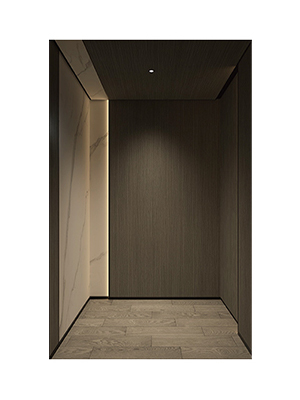Hospital bed elevators, also known as bed lift systems or hospital bed height adjustment mechanisms, are essential components in modern healthcare facilities. They are designed to improve patient comfort, facilitate caregiver tasks, and enhance safety. One of the most common questions from medical staff, caregivers, and even patients’ families is: Are hospital bed elevators height adjustable? The answer is a definitive yes, but the extent of adjustability and functionality depends on the bed model, type of elevator system, and intended application.
Understanding Hospital Bed Elevators
Hospital bed elevators are mechanical or electromechanical systems that allow the bed platform to be raised or lowered. This feature provides several benefits:
- Patient Accessibility: Patients can get in and out of bed more easily, reducing the risk of falls.
- Caregiver Ergonomics: Adjustable height reduces the need for bending or stretching during patient care, minimizing strain and potential injuries.
- Medical Procedures: Certain procedures, examinations, or treatments require specific bed heights for optimal access.
The height adjustment can be achieved using different mechanisms, including hydraulic systems, electric motors, or manual cranks, depending on the design and budget.
Types of Height Adjustment
-
Electric Hospital Bed Elevators
Electric beds are equipped with motors controlled by hand-held remotes or bedside panels. These motors can adjust the bed height smoothly and precisely. Electric height adjustment allows rapid and effortless changes, which is particularly useful in emergency situations or for patients with limited mobility. -
Hydraulic Hospital Bed Elevators
Hydraulic systems use fluid pressure to lift or lower the bed platform. These beds are generally robust and can support heavier patients. Height adjustments are smooth but may require more effort than electric systems and are often controlled via foot pedals or hand levers. -
Manual Hospital Bed Elevators
Manual bed elevators rely on mechanical cranks or screw systems. While less convenient than electric or hydraulic systems, manual adjustment beds are cost-effective and reliable. They are commonly used in home care settings or facilities with budget constraints.
Range of Height Adjustment
The height adjustability of hospital bed elevators varies depending on the model and manufacturer. Typical adjustment ranges include:
- Standard Hospital Beds: 40–80 cm from the floor, allowing caregivers to work at ergonomic heights.
- ICU or Specialty Beds: Some models provide extended height ranges for specific medical procedures or critical care requirements.
- Home Care Beds: Smaller height ranges, generally sufficient for patient transfer and home mobility.
The goal is to provide a bed height that accommodates both patient comfort and caregiver efficiency while ensuring safety.
Safety Considerations
Height adjustability in hospital beds is not only about convenience but also about safety. Key safety features include:
- Locking Mechanisms: Prevent unintended lowering or raising during patient care.
- Anti-Collision Sensors: In electric models, sensors prevent the bed from hitting walls or equipment.
- Weight Capacity: Ensure the bed elevator can safely handle the patient’s weight at all height positions.
- Smooth Operation: Sudden movements or jerks can cause injury; quality elevators provide gradual, controlled adjustment.
Safety compliance with international standards (such as IEC 60601-2-52 for medical beds) ensures that height adjustment mechanisms are reliable and secure.
Benefits of Height-Adjustable Hospital Beds
Height-adjustable hospital beds provide numerous benefits in both clinical and home settings:
- Enhanced Patient Comfort: Patients can sit or recline at preferred heights for eating, reading, or watching TV.
- Ease of Transfers: Adjustable heights facilitate transfers from wheelchairs or stretchers, reducing fall risk.
- Improved Caregiver Ergonomics: Caregivers can adjust the bed to a comfortable working height, minimizing back strain.
- Versatility: Height adjustment combined with other features like backrest and leg elevation provides a multi-functional bed suitable for various patient needs.
Maintenance and Reliability
Hospital bed elevators require routine maintenance to ensure safe and smooth operation. Electric and hydraulic systems should be regularly inspected for motor function, fluid leaks, and mechanical integrity. Manual systems need lubrication and inspection of mechanical components. Proper maintenance prolongs the lifespan of the bed and ensures reliable height adjustment for daily use.
Conclusion
So, are hospital bed elevators height adjustable? Yes, they are specifically designed to provide adjustable heights, enhancing patient comfort, caregiver ergonomics, and safety. Electric, hydraulic, and manual mechanisms offer different levels of convenience and precision, catering to a variety of healthcare environments from hospitals and ICUs to home care.
By choosing a bed with a suitable height range and reliable adjustment mechanism, healthcare providers can improve patient care, reduce caregiver strain, and create a safer, more versatile environment. Proper maintenance, adherence to safety standards, and understanding the bed’s operational limits ensure that the height adjustment feature remains functional and effective over time.
In summary, height-adjustable hospital bed elevators are a crucial feature for modern medical care, combining convenience, safety, and versatility to meet the diverse needs of patients and caregivers alike.











